“When you feel stuck or tired, I recommend that you touch clay to get in touch with nature.”
I love November, clear blue skies and crisp clean air. Time to find that sweatshirt hidden at the back of the wardrobe. Yesterday was beautiful and according to the weather app, tomorrow too. Today on the other hand is cloudy and rainy, typical as I’m journeying my way to the Kamide Choemon Kiln where I shall meet Keigo Kamide, a 6th generation Kutani Ochawanya-san.
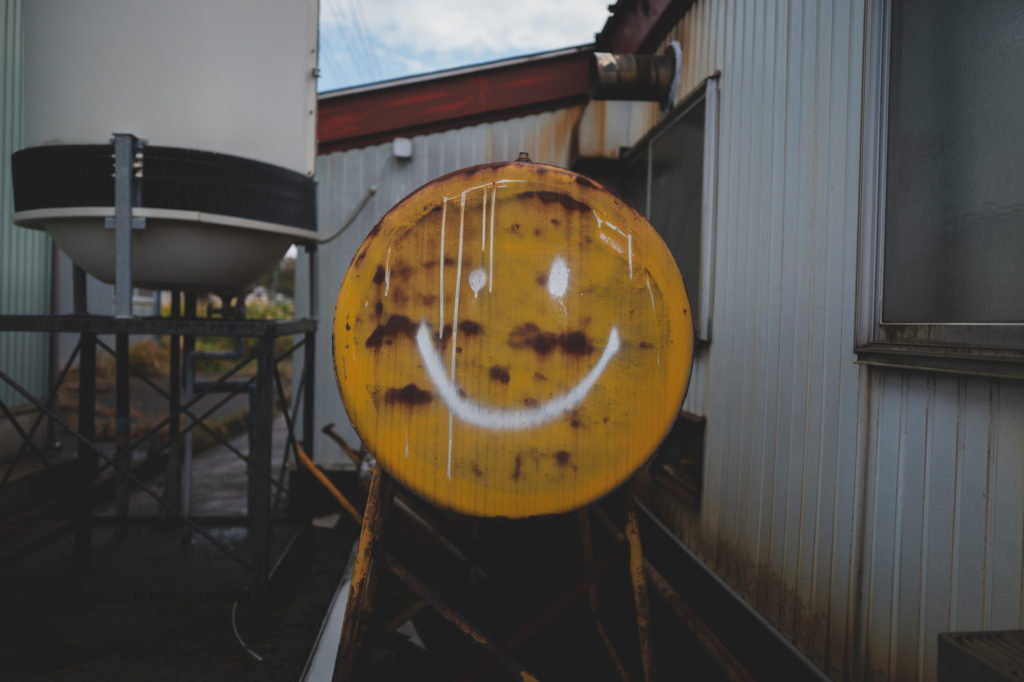
The Kamide Choemon Kiln is in Nomi City, the flatlands between the Nihonkai (Sea of Japan) and Hakusan (Mt. Haku – White Mountain). True to his shy nature Hakusan is hiding under a fringe of clouds. My attempts to encourage him out with silent wishful thoughts failed. On first meeting Keigo he too seems a little shy, but this is just a disguise. For underneath his signature low fringe, is a humorous kindhearted person with plenty to say.
We passed through a small 2nd floor storeroom brimming with a history lesson in Kutani ceramics and on into a smaller meeting room to talk. Within this room a few prized possessions made by Keigo’s ancestors alongside newer additions collected by Keigo himself are proudly on display. A juxtaposition of Kutani ceramics ageing 100 years old and an Korean 1988 Olympics Mascot speaks to Keigo’s personality. Combining a fascination with history and an appreciation of contemporary culture.
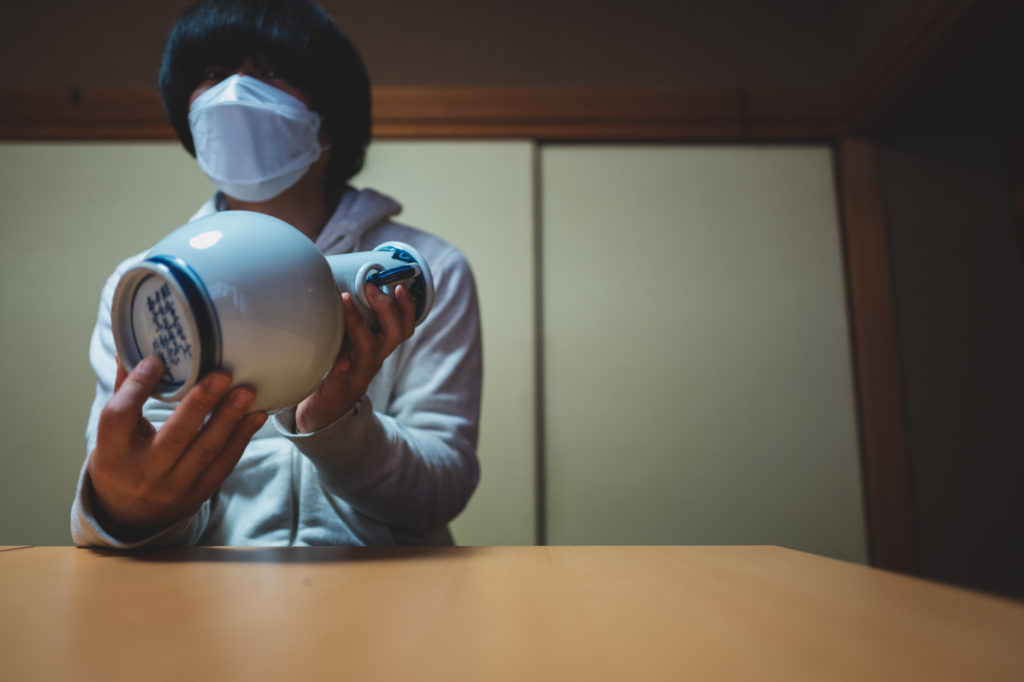
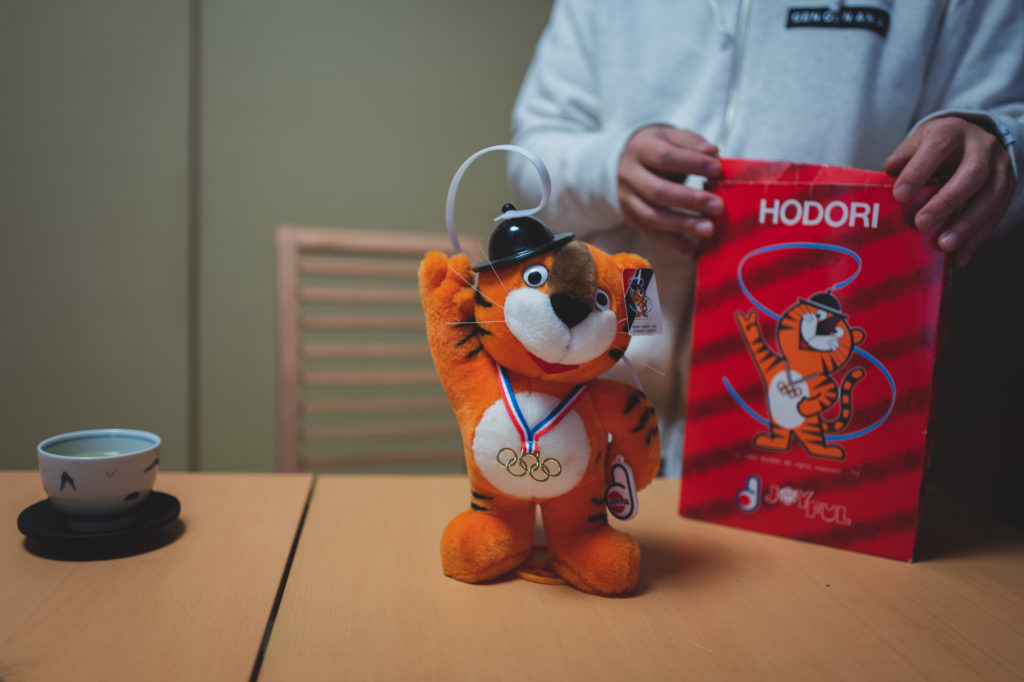
Our conversation soon leads to his family history who have lived and worked in the area since the Edo Period. As it turns out, the simple act of building a bridge across the nearby Tedorigawa (Tedori River) changed the local economy forever and subsequently set Keigo’s destiny. If his bridge had not been built, affording a freer passage for travelling merchants, Keigo would not be the 6th generation kiln owner he is now.
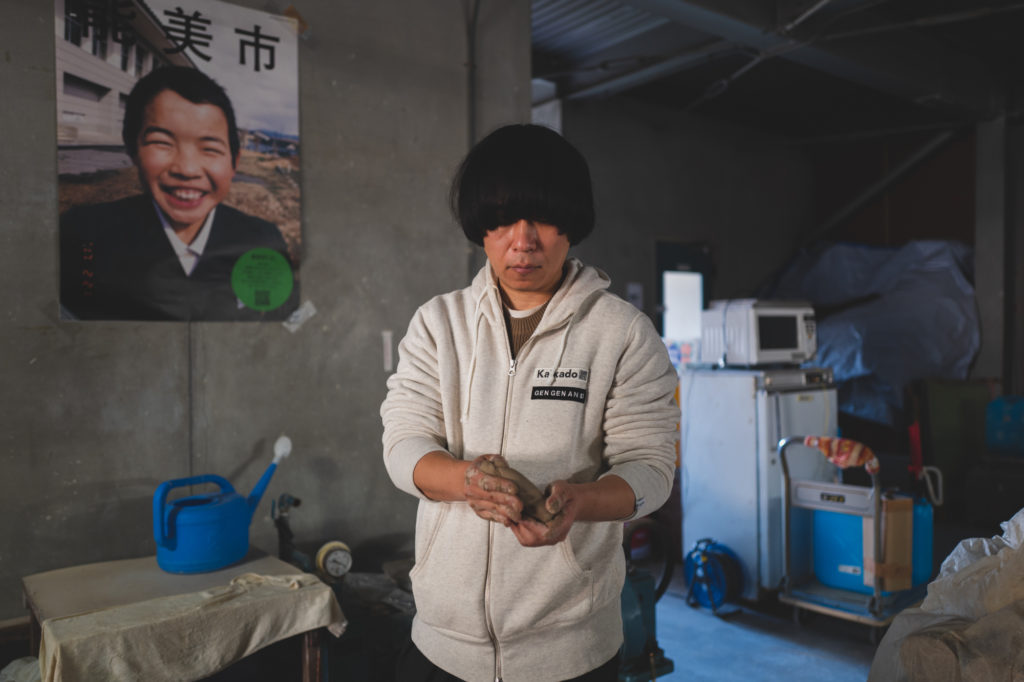
Keigo might seem an unlikely addition to this series of stories on ‘Outdoors & Design’. A self-confessed more indoors than outdoors person, but we shouldn’t overlook one important fact. The beautiful ceramics Keigo produces at his family kiln are made from nature. The clay specifically mixed to produce their signature colour and consistent firing comes from the outdoors. Even the distinctive Kutani pigments are derived from nature outdoors. He is literally moulding the outdoors by hand into his unique contemporary Kutani Ware one teacup at a time.
“When you feel stuck or tired, I recommend that you touch clay to get in touch with nature.”
Actually, when pressing Keigo further he does enjoy life outdoors. Recounting the energising act of collecting Sansai (wild vegetables) with his mother as a boy and now taking solitary walks in the nearby mountains. “It is like going back to reset and refreshing myself.” Walking in the mountains (nature) like moulding clay (nature) you get a feeling of relief. Keigo explains “this is how I make sense of who I am”.
“On a clear day when I can see Hakusan beautifully, I feel refreshed.”
Like many of the local Shinto Shrines, the Choemon Kiln faces towards Hakusan, with spectacular views of the holy mountain on clear days. He admits that he hasn’t climbed to the summit yet, however he does visit Shirayama-san (Shirayama Hime Jinja Shrine) located at its base. It’s a special place for him and his family, having visited every New Years since he was two months old. Although he mentions no dogs are allowed so Kamechiyo and Edward (as in Edward Scissorhands, because he looked like Johnny Depp as a puppy) have to stay at home.
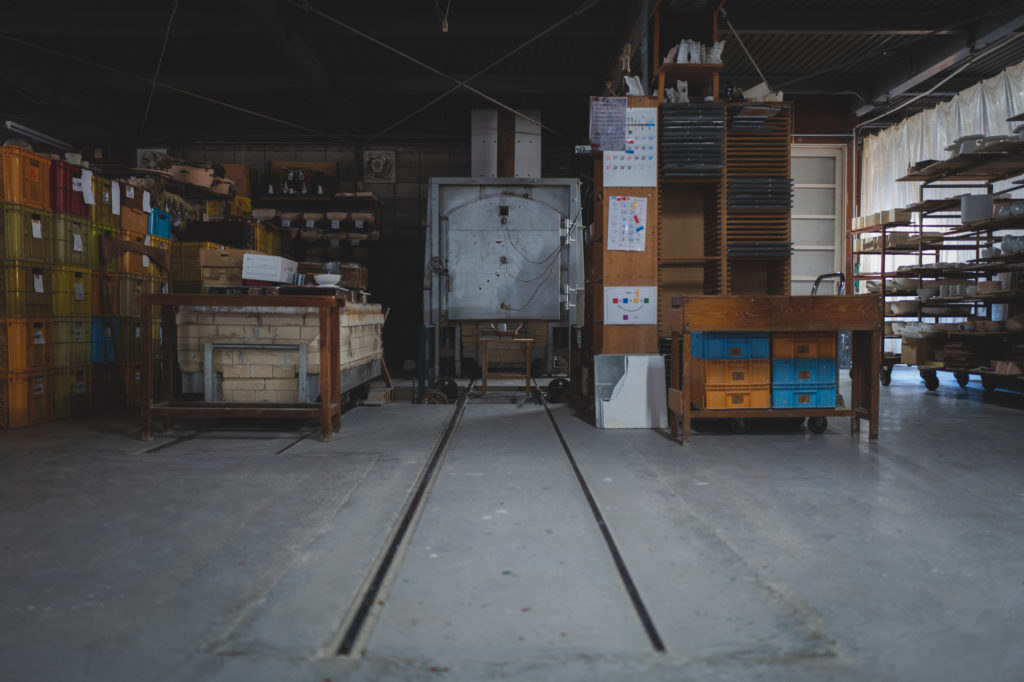
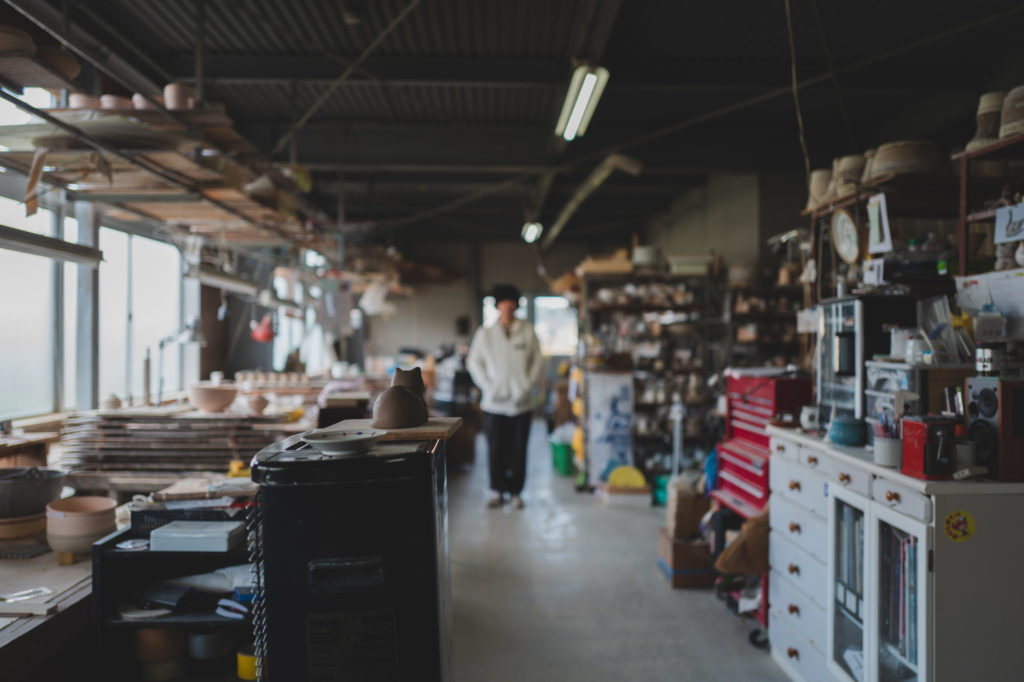
Keigo now guides us around the factory, passing the kiln and several craftspeople working on different ceramic items in varying stages of completion. In one area lumps of clay are transformed into teacups before our eyes by the skilful hands of one craftsperson and in another teacups are delicately hand-painted in preparation for a transformation from light brown clay into the distinctive colours of Kutani Ware.
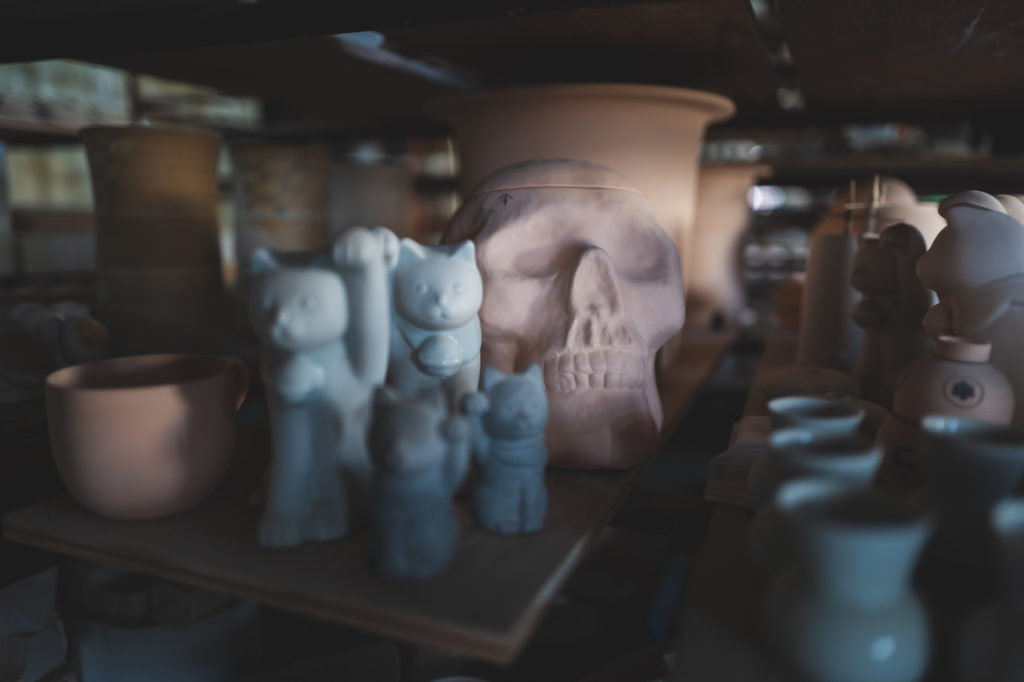
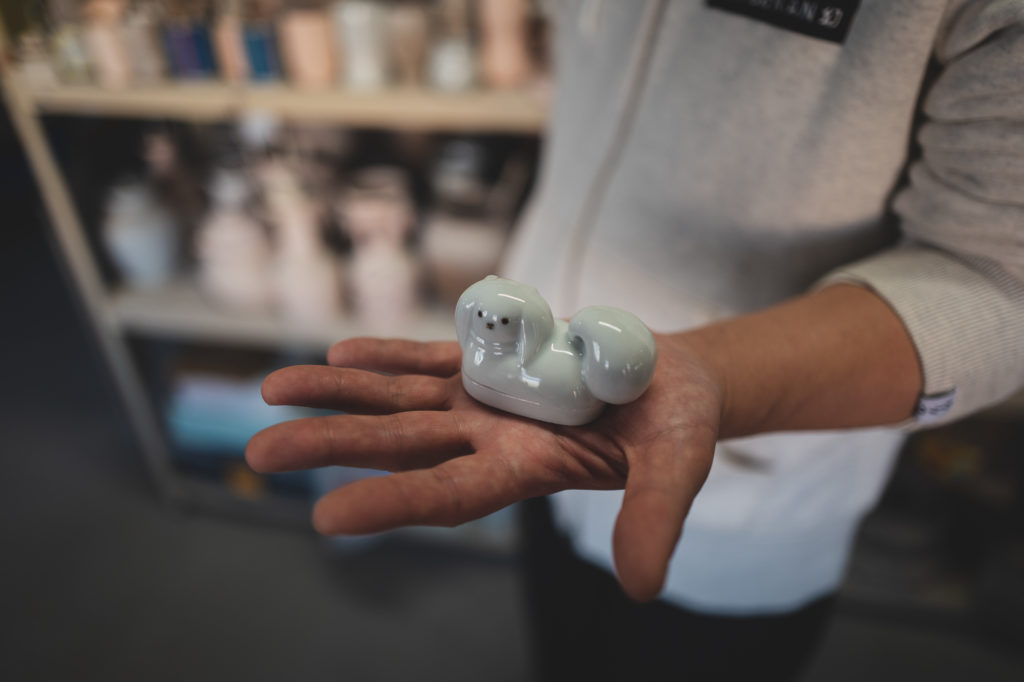
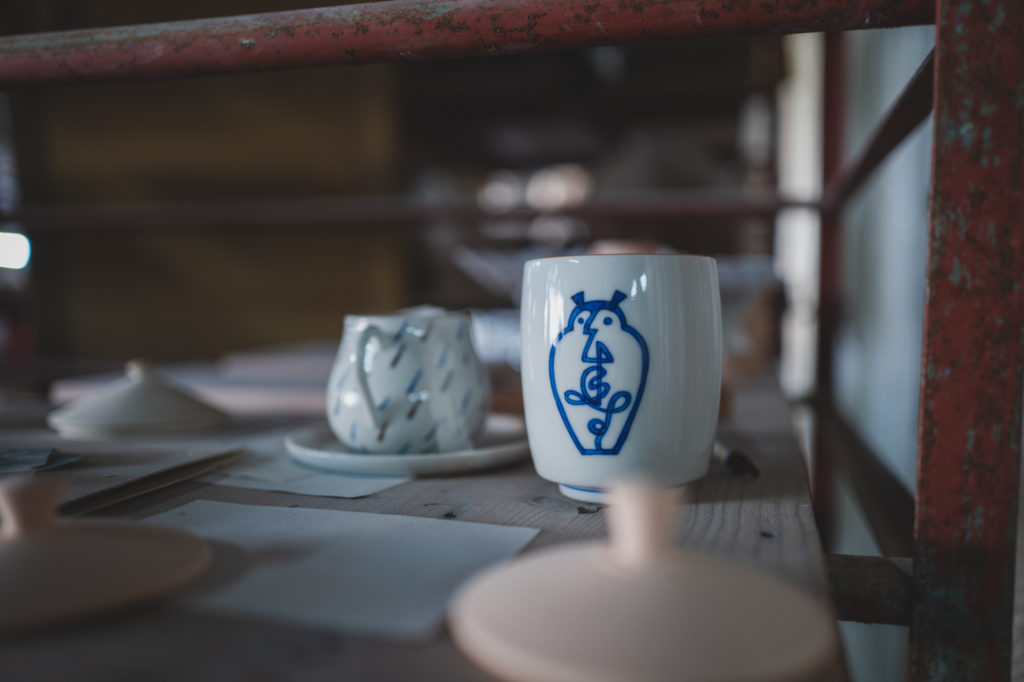
I love visiting ceramic factories, there’s something about the light, colours and shapes that fascinates me. And the act of working a piece of clay, a piece of the outdoors into something useful and personal with your own hands. It brings out the romantic craftsman in me, but the reality is quite different. It’s clear that Keigo and his employees work hard and long. It is also clear that they enjoy the work too. There is a sense of peacefulness and satisfaction in the factory and with the personal relationships.
I can see why Keigo growing up would want to become a ceramic artist, or is he a ceramic designer, perhaps a potter? Initially, not knowing the appropriate title, I asked Keigo what I should call what he does?
He shares a childhood memory of writing in his 5th birthday storybook that he wanted to become an Omochaya-san (toy-maker) and a Ochawanya-san (teacup maker). He showed us the book and there it was. So like that, he became Ochawanya-san, a humble teacup maker, with a keen sense of playfulness in everything he makes. I guess he couldn’t completely let go of the toy-maker after all.
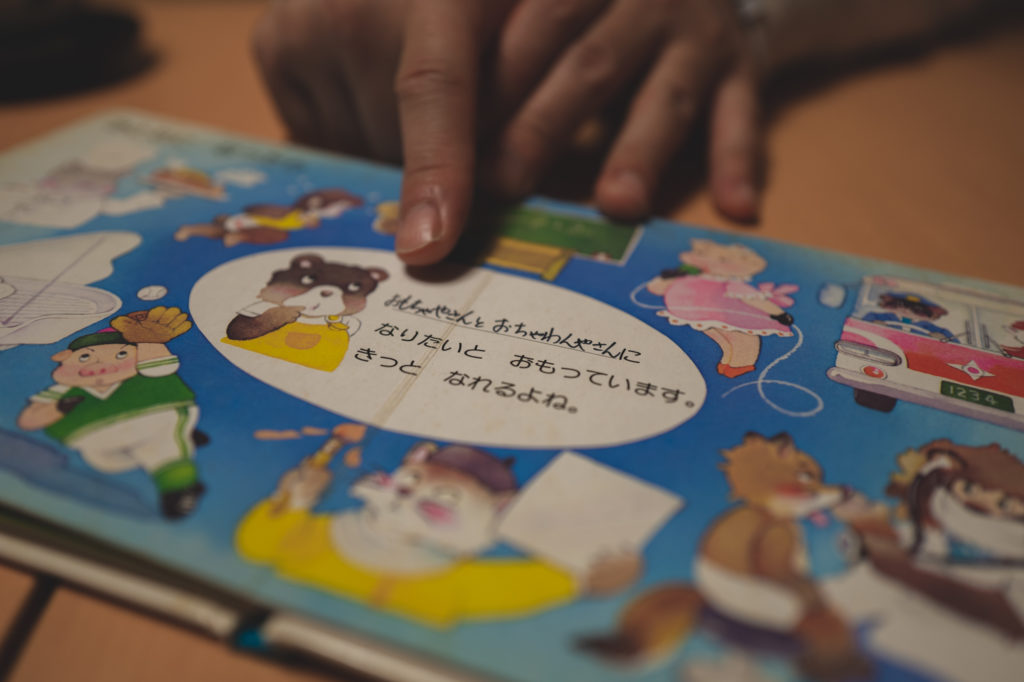
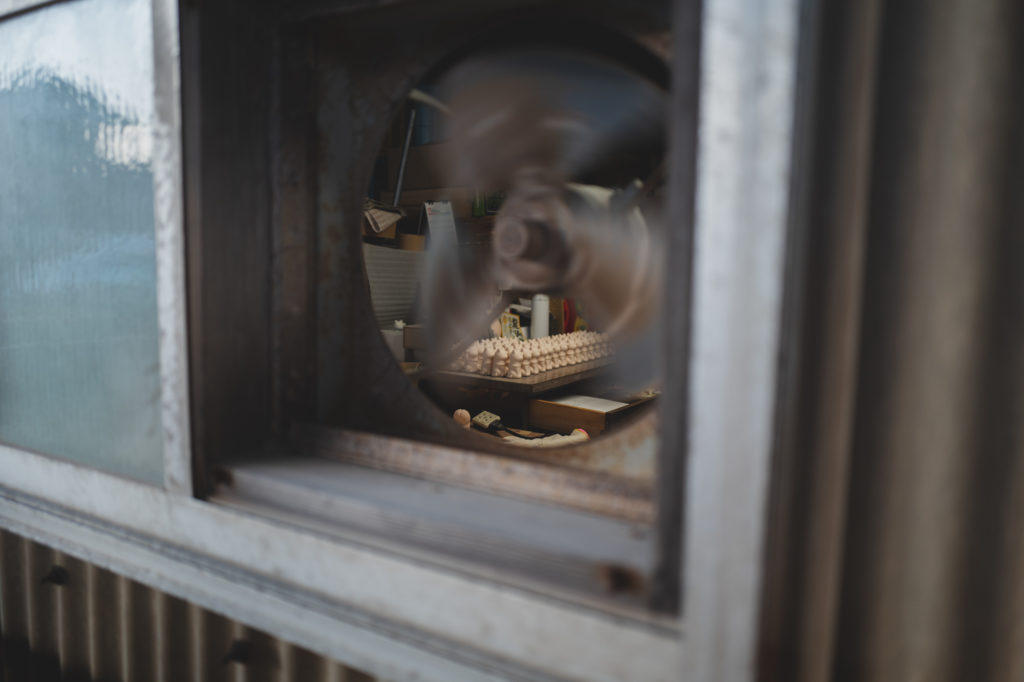
Finally I asked; now that you have achieved your childhood ambitions, what does success look like to you?
“Running a company is expensive so I would simply like to pay back my business loans and also continue to enjoy working with my staff and craftspeople. Other than that, I don’t have any great ambition, or think; let’s get to the top! I don’t want to be the best in Japan or other trivial things like that. I want to keep doing what I feel is fresh and new. I enjoy thinking about new and interesting ideas and taking on new challenges in the context of history. Comfortable in the feeling that this is what the people of the past also wanted to do. Having become a Ochawanya-san, I’ve fulfilled my childhood ambition so I honestly don’t have a bigger definition of success than that.”
Finally adding as our conversation came to an end; “The biggest success might be if everyone feels fulfilled”.
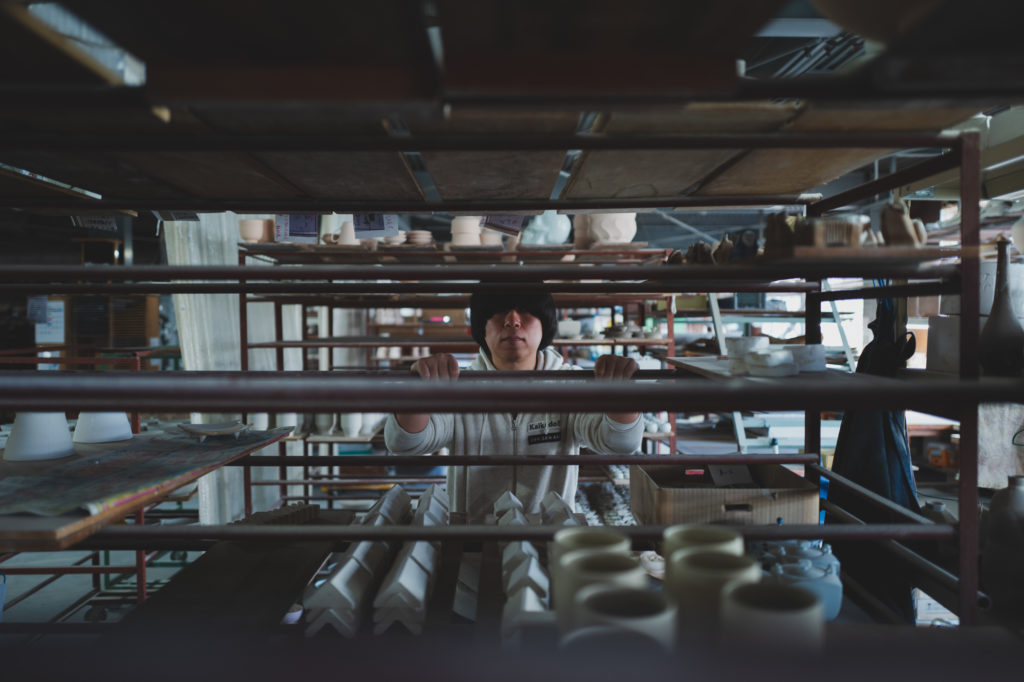
Driving home I gazed in the direction of Hakusan, who was still hiding his face behind a fringe of clouds. I made a promise to myself to return one day and travel across the Tedorigawa Bridge which defined Keigo’s life and to say out loud my thanks to Hakusan.
…and so it goes.
Find more about Keigo and the Kamide Choemon Kiln.
Kamide Choemon Kiln Online Shop
Kamide Choemon Kiln 9 Days Shop
Instagram, Twitter, YouTube
Find James Gibson
Homepage: arukari.substack.com











